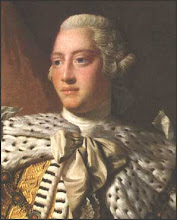Let me tell you about four very different men who share something quite important in common.
On Monday, a man named Jonathan Braun was sentenced to 27 months in prison. The charges against him included sexually assaulting the live-in nanny for his own children and attacking a nurse with an IV pole. He was also accused of assaulting a 3-year-old child.
In October, a man named Christopher Moynihan was arrested and charged with threatening via text to “eliminate” Hakeem Jeffries, the House minority leader, at a speaking engagement in New York City on Oct. 20.
In March, a federal jury convicted a man named Eliyahu Weinstein of defrauding investors of $41 million. As Bloomberg reported, he had falsely promised “to invest their money in Covid-19 masks, scarce baby formula and first-aid kits bound for Ukraine.”
In January, an Indiana sheriff’s deputy shot and killed a man named Matthew Huttle when he reportedly raised a firearm during a traffic stop. Huttle was being arrested for a felony traffic violation when he resisted arrest. A special prosecutor charged with investigating the case said the deputy’s use of force was “legally justified.”
Four different men. Four very different crimes. But their common trait is that each of them had previously received a pardon, commutation or clemency from President Trump. And they’re only a small fraction of a larger number. As our newsroom reported this week, at least eight people to whom Trump granted clemency in his first term have since been charged with a crime.
In addition, “Several others pardoned more recently after being convicted of offenses committed during the Jan. 6, 2021, attack on the Capitol have also run into trouble with the law.”
But the pardons just keep coming. On Sunday, Trump granted sweeping pardons to 77 people who helped him attempt to subvert the 2020 election. Last week, Trump pardoned Glen Casada, the Republican former speaker of the Tennessee House, and Casada’s former chief of staff, Cade Cothren. Both men had been convicted of charges including wire fraud, money laundering and conspiracy to commit money laundering.
In the same set of pardons, Trump also pardoned Robert Harshbarger Jr., the husband of Diana Harshbarger, a Republican representative from Tennessee. As our newsroom reported, Robert had pleaded guilty to “health care fraud and distributing a misbranded drug, in this case kidney medications, some of which came from China, that were not approved for the purpose by the Food and Drug Administration.”
This is just a partial list of the most notorious and unjustifiable pardons of Trump’s second term so far.
I mentioned one of the most brazen in my column two Sundays ago — the pardon of the crypto billionaire Changpeng Zhao.
The pardon came after Zhao’s company, according to reporting by The Wall Street Journal, “took steps that catapulted the Trump family venture’s new stablecoin product, enhancing its credibility and pushing its market capitalization up from $127 million to over $2.1 billion.”
So what do all of these people have in common? It’s certainly not that they’re deserving of pardons. There isn’t a meaningful claim of actual innocence in the bunch, and in almost every case there’s no meaningful evidence of unusually harsh treatment or unjust sentencing. No, the thing they have in common is they are either allies of Trump and his associates or used connections to Trump or his family (or helped enrich Trump) to get relief from justice.






